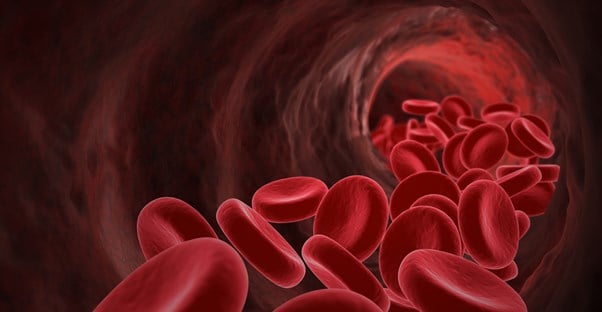Sickle cell anemia is a potentially life-threatening blood disorder affecting approximately 70,000 to 100,000 Americans. Sickle cell anemia is a genetic blood disorder that is acquired by inheriting two sickle hemoglobin genes, one from each parent. The disease largely affects blacks and Hispanics, according to the National Institutes of Health. Almost all states routinely test newborns for sickle cell anemia because it is present at birth. Symptoms, however, do not usually manifest until after the first few months of life and from then on remain episodic throughout the lifespan.
Symptoms
Sickle cell genes tell the body to alter the shape of hemoglobin, the protein found in red blood cells that carries oxygen. Rather than round, pliable, and able to flow freely throughout the circulatory system, sickle hemoglobin is elongated, rigid, and sticky, making red blood cells take on the shape of a crescent moon and cling to one another. The result is blockages in the blood vessels and a shortage of oxygen being delivered to the various parts of the body.
Severe pain in the extremities that won’t go away, stroke, chest pain, fever of 101 degrees Fahrenheit or greater , abdominal swelling, vision problems, and painful long-lasting erections are a few of the most common symptoms and may require a visit to the emergency room. Discuss an emergency plan with your doctors and ensure you have access to your medical team in times of crisis.
Treatment
There is no cure for sickle cell anemia, and treatments are aimed at preventing crises, which are periods of severe pain, shortage of blood supply, swelling, fever, or organ damage. Because sickle cell anemia affects multiple critical organs, managing it can require a team of physicians who specialize in treating specific areas of the body. A few of the most common specialists are:
- Hematologist (blood)
- Pulmonologist (lungs)
- Neurologist (brain)
- Ophthalmologist (eyes)
Understanding Anemia
As its name indicates, sickle cell anemia is a type of anemia, a condition that occurs when you have a lower-than-normal amount of red blood cells. One reason for the deficit is that sickle cells have a shorter lifespan than normal red blood cells. Rather than living for about 120 days, sickle cells die after 10 to 20 days, according to the Mayo Clinic. If too many die at once, your body is unable to produce new cells fast enough. Another cause of low blood counts is that patients with sickle cell anemia are more vulnerable to infections, and certain infections can stop the body from producing red blood cells.
Symptoms of chronic anemia may include: fatigue, headaches, shortness of breath, organ damage, pain, and swelling. Patients may regularly take folic acid, which stimulates red blood cell production or may require a blood transfusion now and then.




